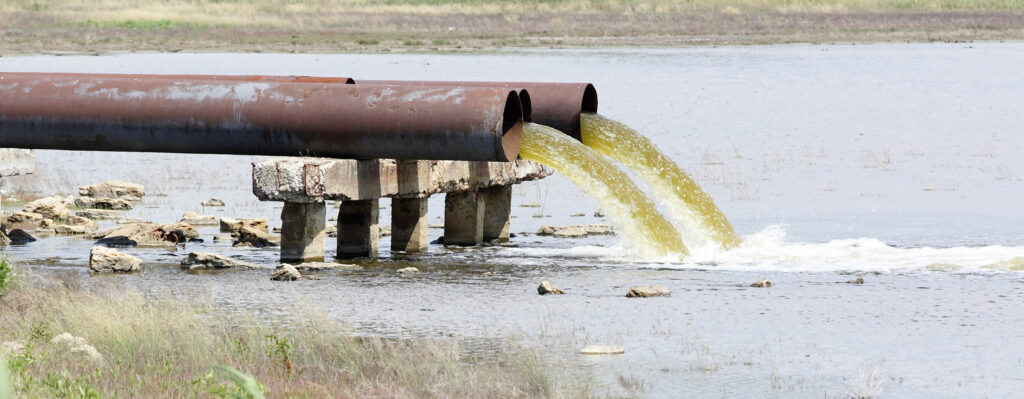In short, if we want to answer the question “What is water pollution” we can say it is the contamination of water bodies as a result of human activities. Examples of water bodies are rivers, lakes, aquifers, groundwater, and oceans. Water pollution occurs when contaminants are entered into the natural environment.
For example, releasing inadequately controlled wastewater into natural water bodies leads to the degradation of aquatic ecosystems. Consequently, this causes some problems to public health for people who live downstream and may use the same contaminated river water for drinking or taking a bath, or irrigation. Water pollution creates water-borne diseases and is the leading cause of death and disease worldwide.
The problem of water pollution endangers our lives. Every year, unsafe water kills more people than war and other violent combined forms. However, our drinkable water resources are limited: Less than 1% of the fresh water on the earth is accessible. Without action, the challenges will still exist by 2050, when the demand for freshwater worldwide will be one-third more than now.
Water Pollution Definition
Water pollution is the entry of undesired substances into water bodies that make the water unsafe for humans and ruin aquatic ecosystems. Water pollution can be caused by various contaminants, such as petroleum, toxic waste, and disease-causing microorganisms.
All plants and organisms that live in or are exposed to contaminated water bodies can be impacted. The pollution consequences can damage special species and affect the natural biological communities.
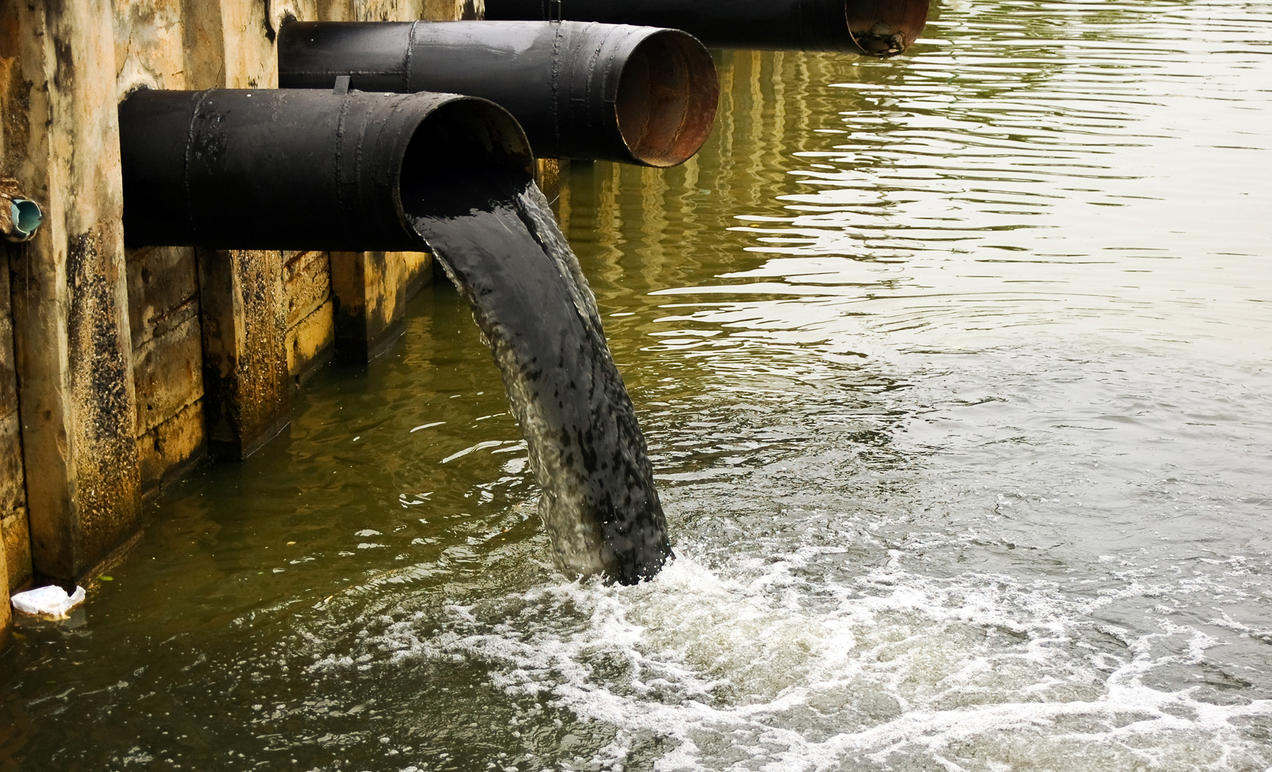
Water Pollution Causes
The origins of water pollution can be a wide variety of chemicals, pathogens, and physical parameters. Contaminants include organic and inorganic materials. Raised temperatures can also cause water pollution.
A usual cause of thermal pollution is water usage as a coolant in power plants and industrial productions. As the water temperature increases, the oxygen levels decrease. It can lead to fish mortality and alternations in food chain composition, species biodiversity reduction, and invasion fostered by new thermophilic species.
Water pollutants are from two general sources: point sources and non-point sources. The first one has a recognizable origin of pollution, like a wastewater treatment plant. The latter sources are more dispersed, such as agricultural runoff. Pollution is the consequence of the gathered effect over time.
Water Pollutants
Water can be easily contaminated. This vulnerability is because water can dissolve more substances than other liquids on Earth. Water can be polluted by many substances, some of which are mentioned below.
Domestic Sewage
Domestic sewage is the main resource of pathogens (disease-causing microorganisms) and putrescible organic materials. Because pathogens are expelled in feces, all sewage from cities and towns likely contains a type of pathogen, potentially a direct threat to public health. Putrescible organic substances threatened water quality differently.
As organics are naturally decomposed in sewage by microorganisms, the water-dissolved oxygen content is depleted. This jeopardizes the quality of lakes and streams, where fish and other aquatic organisms need high levels of oxygen to survive. Sewage-treatment processes decrease the amounts of pathogens and organics in wastewater but do not eliminate them.
Domestic sewage is also the primary source of plant nutrients, principally nitrates and phosphates. Excess nitrates and phosphates in water cause algae to grow, sometimes making very dense, rapid growths known as algal blooms. When the algae die, water oxygen dissolved decreases because microorganisms utilize oxygen to digest algae during the decomposition process.
Anaerobic organisms (those without the need for oxygen to live) then metabolize the organic waste and discharge gases like methane and hydrogen sulfide, which are dangerous to the aerobic (oxygen-requiring) forms of life.
Eutrophication is referred to as the process by which a lake changes from a clean state—with a nearly low concentration of dissolved nutrients and a stable aquatic community—to a nutrient-rich, algae-filled condition and, therefore, to an oxygen-deficient, waste-filled state. Eutrophication is a natural, slow, and unavoidable process. However, when accelerated by human activity and water pollution (cultural eutrophication), it can cause premature aging and death of a water body.
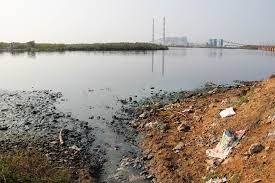
Toxic Waste
If the waste is poisonous, radioactive, carcinogenic (causing cancer), explosive, mutagenic (causing chromosome damage), teratogenic (causing congenital defects), or bioaccumulative (i.e., increasing concentration at the higher points of food chains), it is considered toxic. Origins of toxic chemicals are inappropriately disposed wastewater from industrial and chemical process facilities (mercury, lead, and chromium) and surface runoff, including pesticides applied in agricultural areas and suburban lawns.
Sediment
Sediment such as silt from soil erosion can be transported into bodies of water by surface runoff. Suspended sediment prevents the penetration of sunlight and disturbs the ecological balance of a water body. It can also disrupt the reproductive cycles of aquatic life like fish, and when settling out of suspension, it may threaten bottom-dwelling organisms.
Oil Pollution
Oil pollution takes place when oil from roads and parking areas is transported by surface runoff into bodies of water. Accidental oil spills are another source of oil pollution, destructive leaks from tankers. Oil slicks finally go to shore, endangering aquatic lives and damaging recreational areas.
Thermal Pollution
Unlike chemical pollution, thermal pollution leads to a change in the physical properties of water.
Heat is a water pollutant since it diminishes the capacity of water to dissolve oxygen and raises the rate of fish metabolism. Some species of game fish such as trout cannot endure waters with very low dissolved oxygen. The main heat source is the cooling water discharge from power plants into rivers; the discharged water maybe 15 °C (27 °F) warmer than the natural water. Heat pollution can kill aquatic species, reduce biodiversity in water, and alter the food chain.
Thermal pollution may also be created by the discharge of very cold water from the base of reservoirs to warmer rivers.
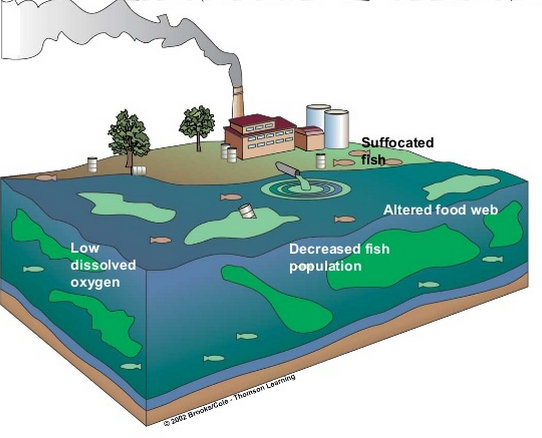
Water Pollution Types
Water pollution can be categorized as surface water pollution and groundwater pollution. Marine pollution is a subset of surface water pollution.
Surface Water Pollution
Surface water pollution contains pollution of lakes, rivers, and oceans. Surface waters cover 70% of the earth’s surface. Marine pollution is a subset of surface water pollution.
One of the common routes for pollutants to enter the sea is rivers. For example, the direct discharge of sewage and industrial waste occurs into the ocean. Large vortexes in the oceans entrap floating plastic debris. This plastic debris absorbs toxic chemicals from ocean pollutants and potentially venom species that eat them. Many of these components remain in the stomachs of marine birds and animals for a long time. This obstructs the digestive tract, reduction in appetite, or even starvation.
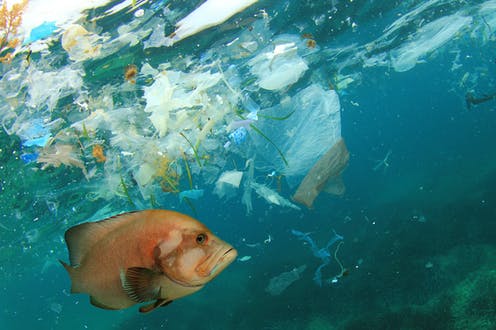
Some side effects are not caused by the initial pollutant but by a derivative state. For example, surface runoff carries silt that can block the penetration of sunlight through the water, hindering photosynthesis in aquatic plants.
Groundwater Pollution
Interactions between surface water and groundwater are complicated. As a result, groundwater pollution is not easily categorized as surface water pollution. Groundwater aquifers are naturally vulnerable to being polluted by sources that may not directly influence surface water bodies. The distinguishing between point sources and non-point sources may be irrelevant in some cases.
Groundwater contamination analysis may focus on soil properties and geology of the site, hydrogeology, hydrology, and contaminants in nature. Causes of groundwater contamination include:
- On-site sanitation systems.
- Naturally occurring (geogenic).
- Sewage.
- Commercial and industrial leaks.
- Fertilizers and pesticides.
- Hydraulic fracturing.
- Landfill leachate.
Water Pollution Analysis
Water pollution can be evaluated using several general categories of methods: physical, chemical, and biological. Most of them involve collecting samples, followed by specific analytical tests. Some techniques may be performed in situ, without sampling, like temperature. Government agencies and research institutions have published valid analytical test methods to aid the comparability of the results of different tests.
Sampling
Depending on the required accuracy and the characteristics of the pollutant, a sampling of water can be done by several methods to conduct physical or chemical testing. Many pollution events are severely limited in time. Most of them are associated with rain events. For this reason, grabbing samples are often insufficient to fully quantify contaminant levels. Scientists who collect this type of data usually use auto-sampling devices that pump increases of water at a time or discharge intervals.
Sampling for biological tests involves collecting plants and animals from the surface of the water body. Depending on the assessment, the organisms may be distinguished for bio surveys (population counts) and returned to the body of water, or they can be dissected for bioassays for toxicity determination.
Physical Tests
Typical physical tests of water include the following parameters:
- Temperature
- Solids concentrations (i.e., total suspended solids (TSS))
- Turbidity
Chemical Tests
Water samples can be tested using the laws of analytical chemistry. Several test techniques are published for both organic and inorganic compounds. Standard methods include pH, Chemical Oxygen Demand (COD), Biochemical Oxygen Demand(BOD), nutrients (nitrate and phosphorus compounds), oil and grease, metals (copper, zinc, cadmium, mercury, and lead), Total Petroleum Hydrocarbons (TPH), and pesticides.
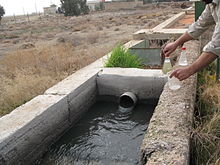
Biological Tests
Biological tests are the use of plant, animal, or microbial indicators to observe the health of an aquatic ecosystem. Their function, population, or state can explain what level of ecosystem or environmental integrity is present. An example of these indicators is the copepods and other small water crustaceans found in many water bodies. Such organisms can be controlled for changes (behavioral, biochemical, or physiological) that may show a problem within their ecosystem.
Water Pollution Control
In urban regions of developed countries, wastewater or sewage is usually managed by centralized sewage treatment plants. The systems with appropriate designs (for example, with secondary steps or more advanced treatments) can eliminate 90 percent or more of the contaminants in sewage. Some plants have supplementary systems to remove pathogens and nutrients. However, these more advanced treatment steps are gradually becoming more expensive.
Managed Sanitation
Houses or businesses that do not use a municipal treatment plant may have a septic tank to pretreat the wastewater on-site and leave it in the soil. Inappropriately designed or placed septic systems can cause groundwater pollution.
Almost 4.5 billion people worldwide do not have securely managed sanitation, according to a study in 2017. Poor sanitation usually leads to water pollution; For example, through the practice of open defecation simultaneously with the occurrence of rain or floods, human feces are transferred from the ground into surface waters. Simple pit latrines can also be flooded when rain occurs. The use of safely controlled sanitation services prevents this type of water contamination.
Industrial Treatment
Some industrial centers produce wastewater similar to domestic sewage. They must treat them by sewage treatment plants. The wastewater may include high concentrations of organic matter like oil and grease, toxic pollutants like heavy metals and volatile organic compounds, and nutrients like ammonia, which require specialized treatment systems. Some industries use pretreatment systems to eliminate some pollutants such as toxic compounds and then release the treated wastewater to the sewer system.
Some Industries generate high volumes of wastewater and may have their treatment systems. Some industries have successfully redesigned manufacturing processes to reduce pollutants via a process known as pollution prevention.
Also, the heat from wastewater produced by power plants must be removed using some methods like cooling towers.
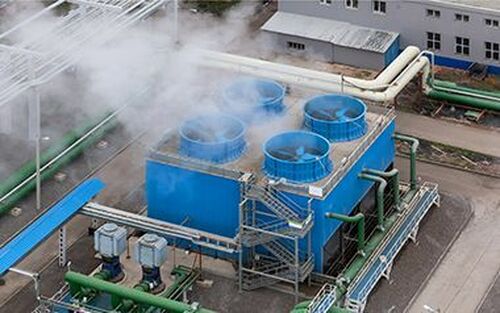
Agricultural Treatment
Farms-washed sediment (loose soil) may be the most significant nonpoint source of agricultural pollution. Farmers may employ erosion controls to decrease runoff currents and hold soil on their fields.
Controls in Construction Sites
Sediment produced in the construction process has to be treated. Also, toxic chemical discharges such as engine fuels and concrete washouts should be prevented.
Control of StormWater
Adequate control of urban runoff includes decreasing the velocity and flow of the stormwater and reducing pollutant discharges. To reduce the effects of urban runoff, different stormwater management techniques can be used.
Buy Equipment or Ask for a Service
By using Linquip RFQ Service, you can expect to receive quotations from various suppliers across multiple industries and regions.
Click Here to Request a Quotation From Suppliers and Service Providers
Read More on Linquip

